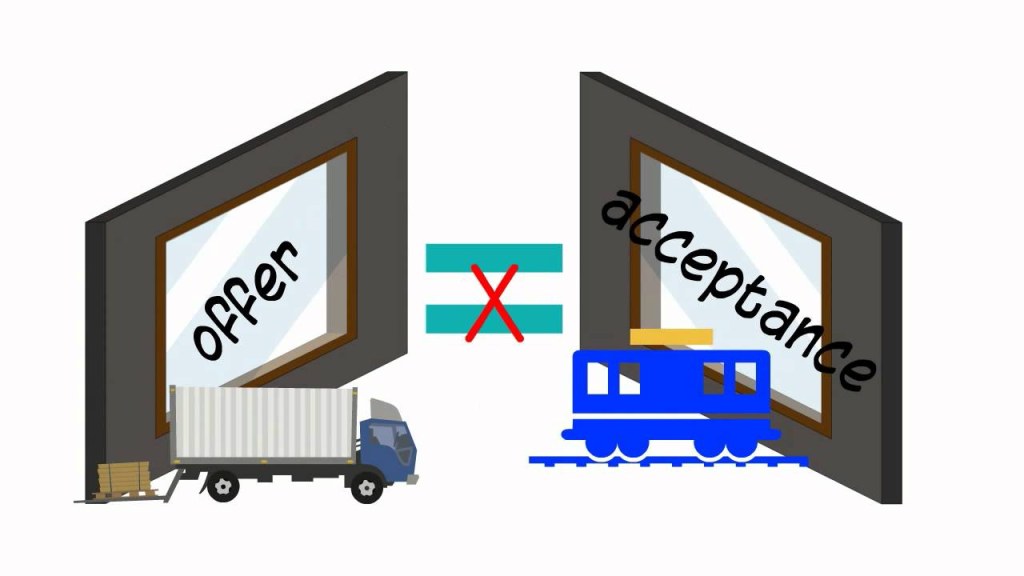Unlocking The Power Of The Mirror Image Rule In Contract Law: Click To Harness Its Benefits!
Mirror Image Rule in Contract Law: Understanding its Importance and Implications
Introduction
Dear Readers,
Welcome to our comprehensive guide on the mirror image rule in contract law. In this article, we will delve into the significance of this rule, its application, and its impact on contractual agreements. Whether you are a legal professional, a business owner, or simply someone interested in understanding contract law, this article will provide you with valuable insights into the mirror image rule.
2 Picture Gallery: Unlocking The Power Of The Mirror Image Rule In Contract Law: Click To Harness Its Benefits!


Now, let’s begin our exploration of this fundamental principle in contract law.
What is the Mirror Image Rule?
🔍 The mirror image rule, also known as the mirror image doctrine, is a fundamental principle in contract law that states that an offer must be accepted exactly as it is without any modifications or changes. In other words, the acceptance of an offer must mirror the terms of the original offer, creating a mirror image of the initial agreement.

Image Source: docsity.com
🔍 This rule ensures certainty and clarity in contractual relationships by requiring parties to unequivocally agree to the same terms. It prevents the introduction of new or altered terms during the acceptance process, protecting the rights and expectations of both parties involved.
🔍 However, it is essential to note that the mirror image rule applies only to the formation of a contract. Once a contract is formed, subsequent negotiations and modifications may be allowed under different legal doctrines.
Why is the Mirror Image Rule Important?
🔍 The mirror image rule plays a crucial role in contract law for several reasons:
1️⃣ Certainty: By requiring an exact acceptance of the offer, the mirror image rule ensures clarity and eliminates ambiguity in contractual agreements.

Image Source: ytimg.com
2️⃣ Mutual Assent: The rule ensures that both parties have a meeting of the minds and truly agree to the same terms, preventing misunderstandings and disputes.
3️⃣ Avoidance of Surprise: Parties can rely on the terms of the original offer without the risk of unexpected modifications during the acceptance process.
4️⃣ Contractual Intent: The mirror image rule affirms the intent of the parties to be bound by the terms they initially agreed upon, promoting contractual stability.
5️⃣ Efficient Contract Formation: By streamlining the acceptance process, the rule facilitates quick and efficient contract formation, enabling parties to proceed with their respective obligations.
6️⃣ Legal Enforceability: A contract that adheres to the mirror image rule is more likely to be enforceable in a court of law, ensuring that both parties’ rights and obligations are protected.
Who Does the Mirror Image Rule Apply To?
🔍 The mirror image rule applies to all parties involved in the formation of a contract. Whether you are a buyer, seller, service provider, or contractor, understanding and abiding by this rule is essential to ensure the validity and enforceability of your contractual agreements.
When Does the Mirror Image Rule Apply?
🔍 The mirror image rule applies when an offer is made and the accepting party responds with an unconditional acceptance. It is crucial to note that any attempt to alter or modify the terms of the offer would be considered a counteroffer, rather than an acceptance under this rule.
Where Does the Mirror Image Rule Apply?
🔍 The mirror image rule is a fundamental principle in contract law that applies in various jurisdictions where common law traditions are followed. It is a cornerstone of contract formation across legal systems globally.
Why is the Mirror Image Rule Important?
🔍 The mirror image rule is vital for maintaining the integrity and predictability of contractual agreements. Its significance lies in:
1️⃣ Ensuring contractual certainty and clarity.
2️⃣ Facilitating mutual assent and agreement between parties.
3️⃣ Protecting the parties from unexpected and unfavorable modifications.
4️⃣ Promoting stability and enforceability of contracts.
5️⃣ Streamlining the contract formation process for efficient business transactions.
How Does the Mirror Image Rule Work?
🔍 The mirror image rule operates as follows:
1️⃣ Offer: One party presents a proposal or offer containing specific terms and conditions.
2️⃣ Acceptance: The other party unconditionally agrees to the exact terms of the offer, creating a mirror image of the initial agreement.
3️⃣ Counteroffer: If the accepting party tries to modify or introduce new terms, it is considered a counteroffer and not an acceptance. The original offeror may then accept or reject the counteroffer.
4️⃣ Formation of Contract: When the accepting party mirrors the offer without any modifications, a valid and enforceable contract is formed.
Advantages and Disadvantages of the Mirror Image Rule
🔍 Understanding the advantages and disadvantages of the mirror image rule is essential for assessing its impact on contractual agreements:
Advantages:
1️⃣ Certainty and Clarity: The rule ensures that both parties have a clear understanding of the exact terms of the contract.
2️⃣ Enforceability: Contracts formed in accordance with the mirror image rule are more likely to be enforceable in a court of law.
3️⃣ Protection of Party Rights: The rule prevents unilateral modifications and protects the rights and expectations of both parties.
Disadvantages:
1️⃣ Limited Flexibility: The rule restricts parties from introducing new terms or negotiating modifications during the acceptance process.
2️⃣ Time Sensitivity: Parties must ensure prompt acceptance to avoid the expiration of the offer, potentially resulting in missed opportunities.
3️⃣ Potential for Disputes: Strict adherence to the mirror image rule may lead to disagreements if parties fail to agree on the exact terms of the offer.
FAQs (Frequently Asked Questions)
1. Can the Mirror Image Rule Apply to Oral Contracts?
🔍 Yes, the mirror image rule can apply to oral contracts. While written contracts offer more tangible evidence, the same principle applies to oral agreements where parties must unequivocally agree to the same terms without modifications.
2. Does the Mirror Image Rule Apply to E-Contracts?
🔍 Yes, the mirror image rule applies to electronic contracts (e-contracts) as well. When parties engage in online transactions or electronically sign agreements, they must still mirror the terms of the offer without alterations for a valid contract to be formed.
3. Can the Mirror Image Rule be Waived?
🔍 Yes, parties can waive the mirror image rule through mutual agreement. They may choose to modify or negotiate the terms of the offer during the acceptance process, deviating from the strict requirements of the rule.
4. What Happens if the Mirror Image Rule is Violated?
🔍 If the mirror image rule is violated, the acceptance may be deemed a counteroffer rather than an acceptance. The original offeror can then choose to accept the counteroffer or reject it, potentially leading to further negotiations or the termination of the proposed contract.
5. Is the Mirror Image Rule Recognized Worldwide?
🔍 While the mirror image rule is a fundamental principle in contract law across many jurisdictions, variations and exceptions may exist. It is essential to consult the specific laws and regulations of the relevant jurisdiction to determine the applicability of this rule.
Conclusion
In conclusion, the mirror image rule in contract law plays a pivotal role in the formation of valid and enforceable agreements. By requiring an exact acceptance without modifications, the rule ensures certainty, mutual assent, and protection of party rights. While it may restrict flexibility, its advantages in terms of contractual stability and enforceability cannot be overlooked.
Next time you enter into a contractual agreement, remember the importance of the mirror image rule and its impact on the validity and enforceability of your contract.
Final Remarks
Dear Readers,
We hope this comprehensive guide on the mirror image rule in contract law has provided you with valuable insights and a deeper understanding of this fundamental principle. Contractual agreements are the backbone of business transactions and legal relationships, and adherence to the mirror image rule ensures clarity, certainty, and enforceability.
However, it is crucial to seek professional legal advice and consult the relevant laws and regulations specific to your jurisdiction to fully comprehend the intricacies of contract law.
Thank you for joining us on this journey of exploring the mirror image rule.
This post topic: Mirror


